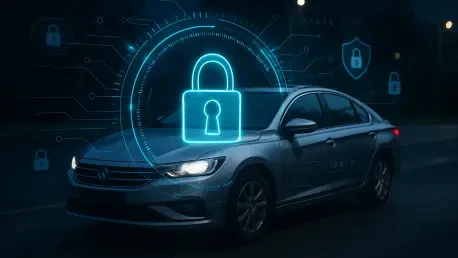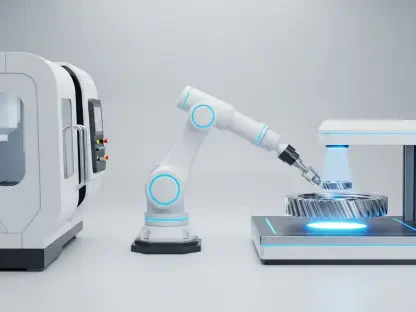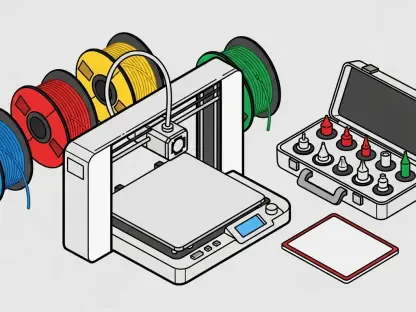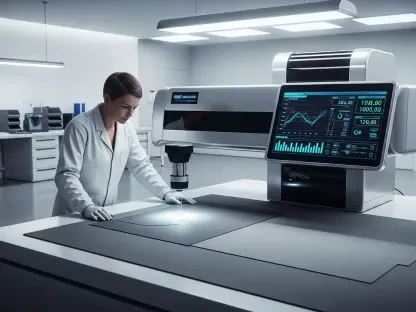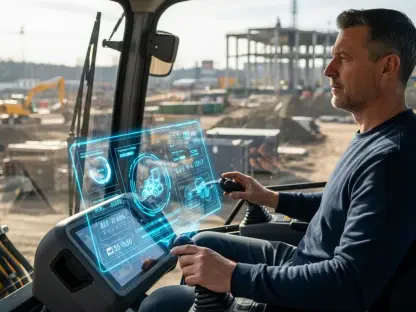In an era where vehicles are transforming into sophisticated, connected devices, the importance of automotive cybersecurity as a safeguard for vehicle safety cannot be overstated, especially as modern automobiles evolve from mere mechanical constructs into intricate systems. These systems are packed with software, telematics, over-the-air (OTA) updates, and vehicle-to-everything (V2X) communication capabilities that enhance functionality but also introduce significant vulnerabilities. These advancements, while offering unprecedented convenience and efficiency, open the door to cyber threats that can directly jeopardize not only data privacy but also the physical well-being of drivers, passengers, and pedestrians. A single breach could potentially disrupt critical systems like braking or steering, leading to catastrophic outcomes on the road. This article delves into the critical intersection of cybersecurity and safety in the automotive realm, examining how digital protection measures are becoming integral to preventing real-world harm, exploring regulatory influences, and highlighting innovative technologies driving this essential evolution.
Cyber Risks and Their Impact on Road Safety
The convergence of digital connectivity and automotive systems has introduced a new dimension of risk where cyber threats translate into tangible dangers on the road. With vehicles increasingly reliant on software for core functions, hackers can exploit weaknesses in infotainment systems, telematics, or mobile apps to gain unauthorized access to critical controls. Such intrusions might allow malicious actors to manipulate braking mechanisms or disable steering, creating scenarios where a cyberattack directly results in accidents or injuries. High-profile cases in the past have underscored these vulnerabilities, raising alarm among manufacturers and consumers alike about the urgent need to secure vehicles against digital assaults that threaten physical safety.
Beyond individual cars, the implications of cyber risks extend to broader transportation networks, especially as connected and autonomous vehicles become more prevalent. In scenarios involving fleet operations or shared mobility services, a coordinated attack could disrupt multiple vehicles simultaneously, leading to widespread chaos or collisions. Furthermore, as V2X technology enables cars to communicate with each other and with infrastructure, unsecured connections could be exploited to manipulate traffic flow or cause gridlock, amplifying safety hazards. Addressing these multifaceted risks through robust cybersecurity measures is essential to ensure that the promise of connected mobility doesn’t come at the cost of compromised road safety.
Regulatory Frameworks Driving Safety Through Security
Governments and international organizations are playing a pivotal role in aligning automotive cybersecurity with vehicle safety through stringent regulations and standards. Mandates such as UNECE R155 and ISO/SAE 21434 require automakers to embed comprehensive security protocols throughout a vehicle’s lifecycle, from initial design to ongoing software updates. These regulations are designed to mitigate cyber vulnerabilities that could lead to safety failures, ensuring that critical systems remain protected against unauthorized access. Compliance with these standards is not merely a legal obligation but a crucial step toward fostering consumer confidence in the safety of modern, connected vehicles.
In addition to specific cybersecurity mandates, broader data protection laws like the General Data Protection Regulation (GDPR) in Europe contribute to safety by securing personal information transmitted through vehicle systems. A breach of sensitive data, such as a driver’s location or travel patterns, could be exploited for harmful purposes that indirectly affect physical security, such as targeted attacks or stalking. By enforcing strict privacy measures, these regulations help prevent scenarios where digital leaks escalate into real-world threats. The regulatory landscape is thus shaping the automotive industry’s approach, making cybersecurity an inseparable component of vehicle safety strategies.
Technological Innovations Bolstering Vehicle Protection
The automotive cybersecurity field is leveraging advanced technologies to fortify vehicle safety against digital threats with remarkable effectiveness. Artificial Intelligence (AI) and machine learning are at the forefront, enabling real-time monitoring of vehicle systems to detect anomalies that might indicate a cyberattack. These tools can swiftly isolate compromised components or apply emergency patches, preventing interference with essential functions like acceleration or braking. By identifying and neutralizing threats before they manifest as physical dangers, such innovations are proving indispensable in maintaining a secure driving environment and protecting lives on the road.
Another significant advancement is the adoption of secure-by-design principles and zero-trust architectures in vehicle development, which prioritize security at every stage of a car’s creation. These approaches ensure that vulnerabilities are minimized from the outset, rather than addressed reactively after a breach occurs. Additionally, cloud-based cybersecurity solutions are gaining traction, offering automakers the ability to monitor fleets remotely and deliver timely updates to address emerging risks. This scalability is particularly beneficial for smaller manufacturers or fleet operators, ensuring that robust protection is accessible across the industry. Together, these technological strides are redefining how safety is achieved through digital resilience.
Future Pathways for a Secure Automotive Landscape
Looking ahead, the integration of cybersecurity into the automotive sector offers promising avenues to enhance vehicle safety as connectivity continues to expand. The rise of software-defined vehicles and subscription-based services necessitates continuous protection through OTA threat management, positioning cybersecurity as a core element of the automotive value chain. Emerging markets, where digital infrastructure and vehicle connectivity are rapidly growing, present significant opportunities for tailored security solutions that address local challenges while upholding global safety standards. Collaborative efforts among automakers, tech firms, and regulators will be vital in developing unified protocols that prevent cyber risks from undermining road safety.
Furthermore, the potential of integrating cybersecurity with digital twins and vehicle lifecycle platforms holds immense promise for predictive risk assessment and proactive threat mitigation. Such tools can simulate potential vulnerabilities and test responses before they occur in real-world scenarios, enhancing preparedness. Partnerships with semiconductor companies and AI specialists are also expected to yield multi-layered security offerings that protect every aspect of a vehicle’s operation. As these initiatives have gained momentum in recent years, they have laid a strong foundation for a future where automotive cybersecurity not only reacts to threats but anticipates them, ensuring safer journeys for all.
